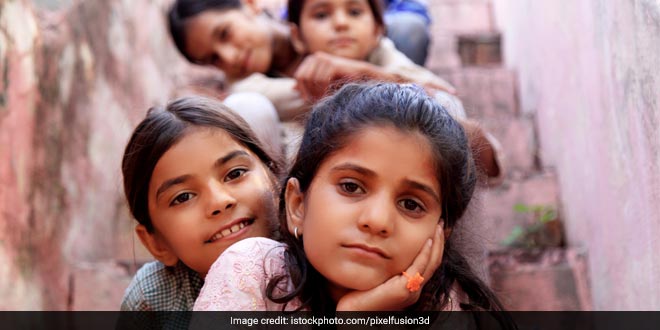New Delhi: When 12-year-old Ankita of Shahjahanpur, Uttar Pradesh (UP), got her first period, her parents decided to stop sending her to school and start training her on household chores instead. Anitka, who was a promising student of class sixth at a public school in her village, had to leave her education and was forced to stop dreaming about becoming a bank manager one day. Ankita’s parents cite two reasons for making her drop out of the school – lack of toilets and lack of adequate menstrual hygiene facilities at home and in schools. As disheartening as Anikta’s story sounds, lakhs of young girls in the state of Uttar Pradesh share the same story. A study conducted recently in all the gram panchayats of 75 districts of UP by Integrated Child Development Services (ICDS), a programme run by Ministry of Women and Child Development (MWCD) revealed the grim realities as Ankita’s that when menstruation begins adolescent girls in the state either leave their schools or attend classes in discomfort due to inadequate sanitation facilities.
Also Read: Flying High: Rural India’s Pad-Women Bringing Bottom-Up Change Feature In Oscar-Winning Documentary
5.13 Lakh Girls Are Out Of School, Reason- Lack Of Sanitation And Menstrual Hygiene
As per the findings of the survey, as many as 5.13 lakh girls in the age group 11-14 years which is almost 25 per cent of over 19 lakh students currently enrolled in upper primary schools of the state dropped out of schools in 2018-19, says an official from ICDS-UP while talking to NDTV about the findings of the survey.
The survey reveals that the maximum numbers of dropouts are from Bahraich, Sitapur, and Shahjahanpur. With female literacy as low as 22.78 per cent, as per the Population Census 2011, the district of Bahraich saw a dropout of more than 39,000 girls while the other two districts that have female literacy barely touching 50 per cent had a drop out of more than 35,000 and 22,000 respectively. The overall female literacy rate in the state stands at a mere 57 per cent.
As per the survey, following reasons have made girls leave schools after completing primary education:
– Poverty
– Lack of proper toilets for girls
– Lack of awareness about menstrual hygiene among people
– Security concerns due to post-puberty changes in the body
– lack of awareness on the significance of female educations
Also Read: Menstrual Hygiene in India: Ditch The Plastic And Go For Eco-Friendly Sanitary Products, Say Experts
Government Plans To Bring Girls Back To School By Making Provisions For Food While Menstrual Hygiene Still Remains On The Back Seat
Shatrughan Singh, Director, ICDS-UP told NDTV that MWCD has decided to provide wholesome food to students from class six to eight in order to bring these girls to school. He said,
The government has decided to spend Rs. 10 on each student per day to provide nutritious meal to encourage the students to come to schools.
Talking about government intervention on the lack of menstrual facilities in schools, Mr. Singh said that ICDS-UP is in discussion with the education department of Uttar Pradesh and MWCD on this matter but nothing has been decided as of now.
Responding to the findings of the survey, Sarvendra Vikram Bahadur Singh, Director, State Council of Educational Research and Training, UP, said,
I didn’t realise that these girls were dropping out of schools due to inadequate menstruation facilities. I have requested ICDS to provide the data of the students who dropped out of the schools and I have also sent notices to district education offices regarding this. We are now on a mission to bring these girls back to school.
He further said that while attempts will be made by the government to bridge the gaps in menstrual facilities, a change of attitude among parents is needed. He signs off saying,
Girls in the rural areas face restrictions from society which often force them to stop studying. We will talk with families of dropout girls and will persuade them to send girls back to their schools.
Efforts UP Is Taking On Improving Menstrual Hygiene
In order to improve menstrual hygiene in rural areas of the state, the Panchayati Raj department of UP government launched a scheme last year to locally manufacture and sell sanitary napkins at subsidised rates through the Anganwadi centres. The Anganwadi centres are further required to send sanitary napkins to schools and local women. Apart from this, the state is also building pink toilets in public places to provide menstrual hygiene facilities for women.
NDTV – Dettol Banega Swachh India campaign lends support to the Government of India’s Swachh Bharat Mission (SBM). Helmed by Campaign Ambassador Amitabh Bachchan, the campaign aims to spread awareness about hygiene and sanitation, the importance of building toilets and making India open defecation free (ODF) by October 2019, a target set by Prime Minister Narendra Modi, when he launched Swachh Bharat Abhiyan in 2014. Over the years, the campaign has widened its scope to cover issues like air pollution, waste management, plastic ban, manual scavenging and menstrual hygiene. The campaign has also focused extensively on marine pollution, clean Ganga Project and rejuvenation of Yamuna, two of India’s major river bodies.




























